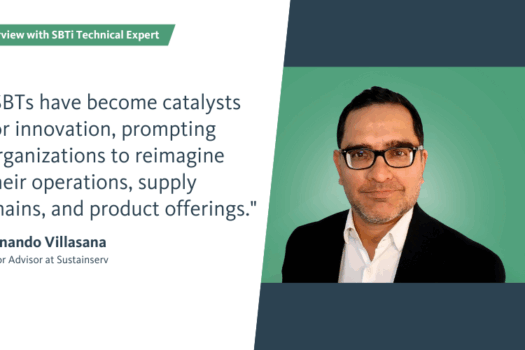Tips
- Don’t leave questions unanswered
- Quantify, quantify, quantify
- Take a stab at Scope 3
- Set reduction goals
- Have your data verified
- Focus on the tougher parts of the questionnaire
- Involve your non-sustainability coworkers
1. Don’t leave questions unanswered
Every required question in the questionnaire is scored for Disclosure, which means that unanswered questions will receive a score of zero out of the maximum number of points available for that question or set of questions. Furthermore, if you aren’t awarded Disclosure points for a question, you won’t be eligible to receive points in the Awareness, Management, or Leadership levels. So even if the data aren’t readily obtainable or the question isn’t even applicable, we recommend that you fill in all required fields to the best of your ability. It sounds silly, but even writing why a particular question is “not applicable” to your company or industry will net you a higher score than if you leave it blank.
2. Quantify, quantify, quantify
Top CDP scorers have quantification tools in place that help them measure emissions, the corresponding reductions, and the impact of energy reduction initiatives. Such tools range from home-grown Excel spreadsheets to robust software – with all of the tradeoffs of cost, ease of use, and data quality. Whatever you use, we recommend that you make sure it meets the following criteria:
- The key performance indicators (KPIs) that are collected are customizable
- Data can be collected uniformly from multiple sites, regions, or departments
- Data can be collected in different units, and reconciled
- Cost data can be collected as a backup to the consumption metric
- There is some built-in error-checking of the data
- You can compare data from previous years for validation and trending
3. Take a stab at Scope 3
To improve the CDP score and the quality of disclosure, you should first evaluate all sources of your Scope 3 emissions for relevancy, since identifying sources as “relevant/not relevant” yields more points than not evaluating them.
Before you clear your calendar, note that evaluating your Scope 3 emissions isn’t nearly as involved as calculating these emissions; a straightforward assessment for relevancy is sufficient. This initial evaluation also helps to clarify which sources will be relevant for your company to report on in the future. You can mark sources that might be relevant for future reporting, e.g. business travel, as “relevant, not yet calculated” to indicate that your company intends to calculate corresponding emissions in the future.
4. Set reduction goals
CDP looks for a suite of credible, achievable, and meaningful goals for emissions reductions. These are typically based upon current levels of performance, industry/sector best practices, and reasonable actions that your company can take in the coming year(s) – keeping in mind corporate priorities and realistic scenarios. We recommend developing and discussing reduction goals; they don’t have to be “stretch” goals, they just have to be non-trivial – and actionable.
Leading scorers base their emissions reduction goals on Science-Based Targets (SBTs). Targets are considered science-based if they are in alignment with a global emissions pathway that limits global warming to under 2° C. Companies follow the rigorous SBT methodology to contextualize their emissions reduction goals to their share of the corresponding global carbon “budget,” which is allotted to them based on their size and sector. The SBT initiative offers a few different methodologies to ground reduction targets in climate science, using absolute or intensity-based calculations.
For example, we’ve helped companies such as the information management company Iron Mountain, real estate investment trust Forest City, and European logistics and supply chain management firm Panalpina to set science-based targets, and to build roadmaps as to how they’ll achieve these targets.
5. Have your data verified
The “A” scorers, in our experience, have their data verified by an independent entity. Such third-party verification lends greater legitimacy to self-reported data, which CDP awards with higher scores.
We’ve helped many companies have their data assured for carbon inventories and GRI-compliant reporting. While an external audit can be a cumbersome process, it’s a required step to reach a “Leadership”-caliber CDP grade. The best “Leadership” performers can become eligible for the A-List.
6. Focus on the tougher parts of the questionnaire
Some of the longer, more challenging sections of the questionnaire present the greatest opportunity to improve your CDP score and quality of disclosure. For example, we encourage you to prioritize the Risks and Opportunities section. Although this section may appear daunting, it’s a core component of CDP’s mission to encourage companies, investors, and cities to take urgent action on climate change. Providing comprehensive answers to this section is a critical step that organizations must take to develop robust strategies to mitigate climate change.
To identify your company’s risks and opportunities for climate action, consider how you can leverage your company’s core competence to contribute to the systemic improvements in the low-carbon economy – whether it’s in design and manufacturing, software and other technology, analysis, or financing.
For example, our client Iron Mountain, the leading information management company, identifies its severe weather-proof storage facilities as an opportunity to help their customers develop climate mitigation strategies.
7. Involve your non-sustainability coworkers
Finally, we recommend that you don’t go it alone! You know that reducing emissions across the organization requires buy-in from many of your colleagues, including IT, HR, supply chain/procurement, operations, and finance. Draw upon these same departments across your organization to help fill out the CDP questionnaire.
Working with these groups early on in your CDP filing will prime them to understand what’s getting measured, so they can help you track and improve these KPIs. We recommend that you work with a multi-stakeholder internal team to craft stronger content for your CDP filing.




